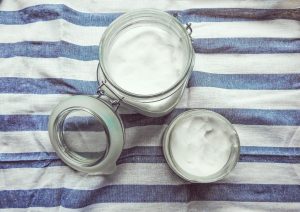
For the safe practice of essential oil used it is essential to have at least a basic understanding of the chemistry of the essential oils before being able to use them in a meaningful, caring and effective way.
The chemical composition of essential oils is very complex, each component has its own effect. It doesn’t work alone but interacting. We don’t need to learn essential oils like we do in a chemistry book, just a rudimentary understanding that will help us get and use them better.

The major 13 compounds, or constituents, that are found in essential oils can be classified as follows(A-Z):
Alcohols: The name of alcohols start with the parent terpene they were derived from and always end in “-ol.” Alcohols possess good antiseptic, antiviral, and anti-fungal properties. They are generally non-irritating to the skin and nontoxic. Alcohols are uplifting and energizing. Some examples of alcohols include linalool, menthol, borneol, cedrol, citronellol, and geraniol.
Aldehydes : Aldehydes are responsible for the characteristic fragrance, or aroma, of many essential oils. They possess anti-infectious, tonic, immune-stimulating, anti-inflammatory, vasodilating, hypotensive, antiseptic, fever-reducing, and calming properties.
Oils with high levels of aldehydes, like lemongrass, may irritate the skin and cause sensitization in some individuals. Aldehydes are unstable and susceptible to oxidation when exposed to oxygen and low heat, making it important to store them properly. Aldehydes end in “-al.” Common aldehydes include cinnamaldehyde, neral, geranial, and citronellal.
Alkanes: Only a few essential oils contain alkanes and usually in very small quantities. Rose oil appears to have the highest concentration of alkanes at up to 19 percent. The purpose of alkanes in plants is to protect the plant from harmful organisms and predators, as well as decrease water and mineral loss. Rose oil contains significant amounts of alkanes. Examples include tricosane, undecane and dodecane.
Alkenes: Abundant in trees and other plants, alkenes influence the characteristic odor of essential oils. These compounds can be identified by their “-ene” ending. They possess anti-inflammatory, relaxant, anticancer, analgesic, antifungal, and antimicrobial properties. Examples include limonene, myrcene, humulene, chamazulene, and thujene.
Carboxylic Acids: Carboxylic acids are organic acids formed by the oxidation of aldehydes that usually end in “-ic acid.” They are rarely found in essential oils because they are not very volatile. They are anti-inflammatory and antiallergenic.
Coumarins: Essential oils that contain coumarins are typically phototoxic and should not be used immediately prior to sun or UV exposure. They are not easily extracted during the distillation process because they are not very volatile. Coumarins are blood thinning, hypotensive, antispasmodic, anticonvulsant, and antimicrobial. They include bergapten, psoralen, angelicine, citropen, and bergaptol.

Esters: Essential oils that contain esters are generally very fragrant, often producing a fruity aroma. They possess antispasmodic, anti-inflammatory, antifungal, relaxant, antimicrobial, and skin-nourishing properties.
Essential oils high in esters are good choices for muscle spasms and skin rashes. These compounds are widely found in essential oils and usually end in “-ate.” Some examples of esters include linalyl acetate, geraniol acetate, eugenol acetate, and geranyl acetate.
Ethers: Ethers have similar properties and characteristics to esters but are considered much stronger compounds. Because of their powerful effect, essential oils that contain ethers should not be taken in high doses or used for extended periods. They possess antiseptic, anti-infectious, anti-inflammatory, antispasmodic, expectorant, stimulant, diuretic, and nervine (calms and soothes the nerves) properties. Ethers usually end in “-ole” and include estragole and anethole.
Ketones: These reasonably stable compounds are not easily metabolized by the liver, so those with liver diseases should use very small quantities of essential oils high in ketones and only for short periods. Ketones are extremely powerful and often considered toxic because of their potency.
Many aromatherapists suggest using them very cautiously. However, this is not the case with all ketones. Camphor, borneol, and eucalyptol are monoterpene ketones that the available body of evidence suggests may be toxic to the nervous system depending on dosage, while jasmine, fenchone, and isomenthone are considered nontoxic. Ketones aid the removal of mucous, stimulate cell and tissue regeneration, promote the removal of scar tissue, aid digestion, normalize inflammation, relieve pain, reduce fever, may inhibit coagulation of blood, and encourage relaxation. Other examples of ketones include thujone, menthone, and carvone.
Lactones: Lactones are considered antimicrobial, antiviral, anti-inflammatory, relaxing, analgesic, and fever reducing and may lower blood pressure. They are primarily found in expressed oils, but are sometimes found in solvent-extracted oils as well. Examples include bergaptene, furanogermacrene, coumarin, and alantolactone.
Oxides: Oxides are formed when an element is oxidized by exposure to the oxygen in the air. Other than eucalyptol (1,8-cineole), they are quite rare in essential oils. They are expectorants, mildly anti-infectious, antiseptic, and anesthetic. Unfortunately, oxides are also known to cause skin irritation and sensitivity, so they should be used with caution topically. Examples include eucalyptol, linalyl oxide, and ascaridole.
Phenols: The most common phenols found in essential oils include thymol, carvacrol, eugenol, and chavicol. Their names end in “-ol” or “phenol.” Essential oils that contain phenols are highly susceptible to oxidation, may irritate the stomach lining, and are very likely to cause skin sensitivity and/or reactions, so essential oils that contain them must always be diluted before opical application.
Essential oils with phenols should be used for short periods and taken in lower doses internally because they are very powerful. They are stimulating to the nervous and immune systems, act as a tonic within the body, are powerful anti-infectious agents, help rid the body of parasites, may elevate body temperature, help normalize inflammation, useful for rheumatic conditions, help expel excess gas from the intestines, diuretic, antiseptic, and have been shown to clean cell receptor sites.
Terpenes: Terpenes can be subdivided into monoterpenes, sesquiterpenes, and diterpenes based on their structure. Terpenes can influence both the initiation and progression of cancerous cells. Another remarkable property of terpenes is their ability to cross the blood-brain barrier and enter brain tissue.
According to research, terpenes increase cerebral blood flow, thus indirectly enhancing delivery of oxygen to the brain. They are also antiviral, antibacterial, antifungal, antiseptic, analgesic, protective of DNA, antitumoral, anti-inflammatory, antispasmodic, expectorant, anti-allergenic, stimulative of organs, oxygenating of the tissues, supportive of detoxification processes, and can be both uplifting and relaxing.
Monoterpenes are widely found in essential oils. Examples of terpenes include limonene, pinene, myrcene, camphene, beta-caryophyllene, farnesene, cedrene, cadinene, and sabinene.
yes